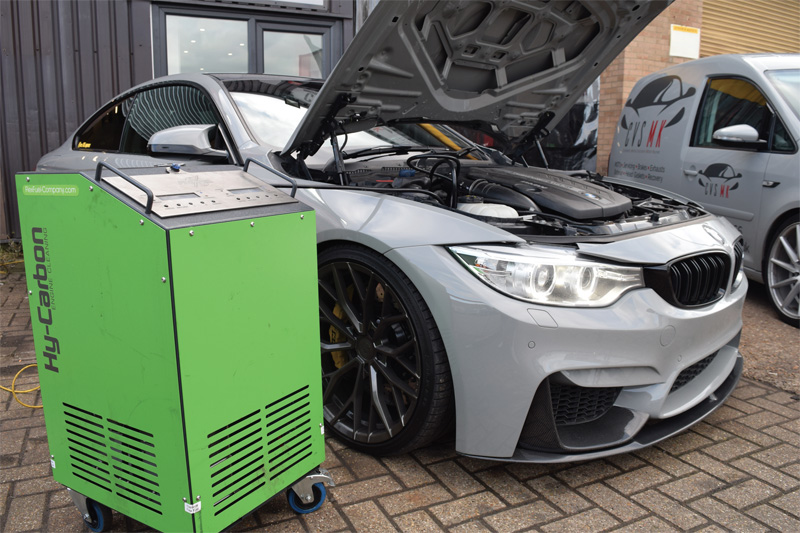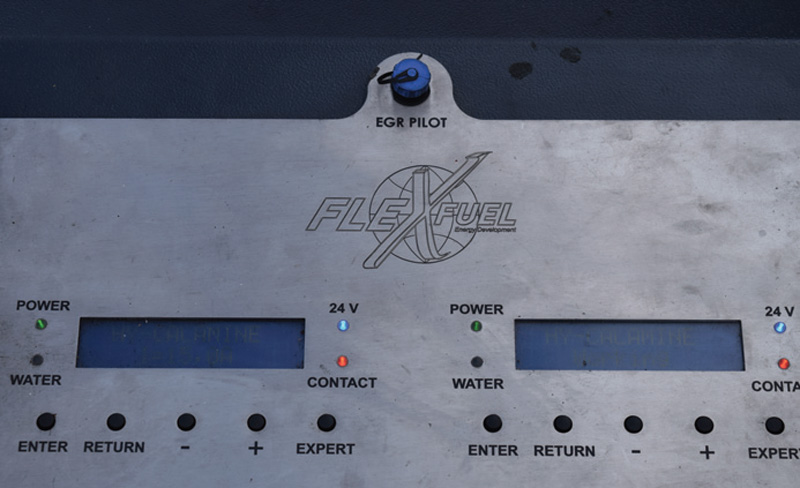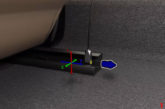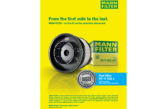
FlexFuel believes it can offer a profitable and straightforward engine cleaning solution. Here the company provides the evidence to these claims.
Engine cleaning can add a vital service to your business. With vehicle emission systems becoming complex, and the introduction of filters on diesels to reduce particulate matter (with similar filters introduced on newer petrol models), garages are increasingly aware of the benefits of cleaning.
Added to the improved emissions output is the decrease in fuel consumption and the increase in performance. Carbon build-up can be akin to a clogged artery. As passageways close up, airflow becomes restricted, and the engine has to work harder – consuming more fuel as a result. Meanwhile, the restriction means the vehicle cannot perform as efficiently, restricting power output.
FlexFuel’s hydrogen cleaning solution is efficient, environmentally friendly and requires very little work from technicians. Taking advantage of increased awareness and a non-labour-intensive process may be a win-win for garages.
Process explained
FlexFuel’s green machine uses electrolysis to produce a mix of hydrogen and oxygen, which is then drawn into the engine from a pipe placed in the breather hose.
Once the machine is running and the car is started, the hydrogen and oxygen mix helps to increase the engine’s internal oxygen proportion, improving combustion while the hydrogen ‘softens’ the carbon build-up and breaks it down into hydrocarbons, which then exits the vehicle through the exhaust system.
The FlexFuel machine can produce up to 610L of hydrogen per hour, and the more hydrogen produced, the better the clean.
Labour saving
The process of using the machine is straightforward, with no need to dismantle the engine or exhaust system of the vehicle. A technician would only need a few minutes to remove the inlet hose and feed the pipe from the machine into it, before replacing the hose to wedge the pipe in place. Once the process is complete, the pipe is removed, and the inlet hose replaced. Depending on the car or van undergoing the treatment, this manual section of the clean takes as little as five to 10 minutes.
Treatment from the machine itself will run for between 30 and 90 minutes, depending on the level of clean required. During this time, the vehicle needs to be running. However, the technician does not need to monitor this, apart from pressing the accelerator every now and again. To keep a constant rev-level, a bar can be used on the accelerator pedal.

This means that this technician is free to complete another job once the process is underway. As the FlexFuel machine runs on deionised water and no harsh chemicals, any charge for the cleaning service is almost pure profit, meaning the overall return on investment is high. Some report that the machine has more than paid for itself within a year of purchase.
Added benefits
The FlexFuel machine has an additional advantage that allows thorough cleaning of the engine. The EGR Pilot feature provides a connection to the vehicle’s exhaust gas recirculation valve, and ‘pulses’ it, opening and closing the valve, allowing the hydrogen and oxygen mixture to clean around the edge of the interior flap.
Should this not be done, there is a risk that the EGR valve can stick due to carbon buildup, meaning the engine will run rich, and fuel consumption will continue to increase. In time, this problem could also cause an engine management light and rough idle.
Connecting the EGR Pilot is perhaps the trickiest part of the FlexFuel process, depending on where the electrical connector plug is located in the engine bay. Even so, it is likely to add only minutes to the procedure.
As a tip, technicians currently using the machines suggest noting the location of the plug when the vehicle is booked in, to avoid the need to search for it, and to be prepared with any potential tools required to help access it.
Profitable thoughts
With a technician’s time free during the cleaning process, garages can continue to take on work in that time slot, meaning the income generated from running FlexFuel is an added bonus for that time, which boosts the return on investment depending on what you decide to charge for the procedure. You may choose to charge a flat fee, or base the cost around your hourly labour rate, meaning you can charge for the longer 90-minute clean.
Garages already working with FlexFuel also recommend offering engine cleaning as an annual service and have set up procedures to remind drivers as to when their clean is due. This should increase the likelihood of garages seeing return customers, with the driver experiencing the continued benefits of performance and efficiency gains.









